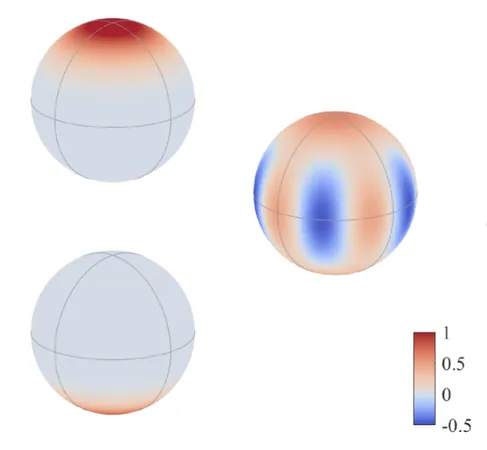
Breakthrough in Quantum Physics: Scientists Achieve 1,400-Second Quantum Coherence in Schrödinger-Cat State!
2024-10-31
Author: Nur
Revolutionizing Quantum Measurements
The study focuses on manipulating ytterbium-173 atoms to create stable superpositions, a key feature in quantum metrology aimed at improving measurement sensitivity beyond traditional limits. This lengthy coherence time, the longest reported to date, is a game-changer that could dramatically enhance how we measure magnetic fields and other phenomena. It's akin to watching your favorite TV show without interruptions—an attentively preserved state over an extended period.
Quantum Metrology Explained
Schrödinger-cat states, a staple of quantum theory, illustrate how particles can exist in superposition—seemingly in two places or states at once. In this study, the researchers created a cat state with two opposite spin orientations of ytterbium atoms. These delicate superpositions typically face challenges from environmental factors that disrupt coherence. However, the ability to maintain stability for such a long duration could unlock new methods for highly sensitive measurements in various domains, from fundamental physics research to advanced medical imaging technologies.
Innovative Techniques in Atomic Isolation
To accomplish this feat, the researchers utilized a 'decoherence-free subspace' within an optical lattice, a controlled environment established by precisely intersecting laser beams. This setup neutralizes the common challenges associated with light intensity variations that typically lead to decoherence. By protecting the ytterbium atoms from environmental interference, the research team effectively created conditions under which these atoms could thrive, resulting in a stable cat state.
The team employed techniques such as Ramsey interferometry—an intricate two-step process that measures shifts in phase—allowing them to confirm that their cat state remains stable for precise quantum measurements, achieving sensitivity levels close to the theoretical Heisenberg limit.
Implications for the Future: Quantum Sensors and Beyond
The potential applications of maintaining a long-lived Schrödinger-cat state are vast. This achievement could pave the way for the next generation of quantum sensors capable of ultra-sensitive magnetic field detection, with implications for fields that require high precision, such as gravitational wave detection, quantum navigation, and the development of next-generation atomic clocks.
The researchers see a path forward for practical applications, envisioning these long-lived cat states as essential tools in improving the operational capabilities of quantum metrology systems and transforming various industries.
Challenges and Future Research Directions
While the research is promising, there are notable limitations. The complex experimental setup poses challenges for scaling and applying these techniques outside laboratory conditions. Future studies may focus on extending coherence times further or refining methodologies to enhance robustness in more variable environments.
Additionally, the team is keen to explore multi-particle systems and investigate combining cat states with entangled states, which could amplify sensitivity and precision in cutting-edge scientific endeavors.
This study not only marks a pivotal moment in quantum physics but also sets the stage for groundbreaking innovations in measurement technology. As researchers continue to explore these realms, we stand on the verge of witnessing a new era of precision that could redefine our understanding of the universe.
Stay tuned for more updates as the world of quantum mechanics unfolds!



 Brasil (PT)
Brasil (PT)
 Canada (EN)
Canada (EN)
 Chile (ES)
Chile (ES)
 España (ES)
España (ES)
 France (FR)
France (FR)
 Hong Kong (EN)
Hong Kong (EN)
 Italia (IT)
Italia (IT)
 日本 (JA)
日本 (JA)
 Magyarország (HU)
Magyarország (HU)
 Norge (NO)
Norge (NO)
 Polska (PL)
Polska (PL)
 Schweiz (DE)
Schweiz (DE)
 Singapore (EN)
Singapore (EN)
 Sverige (SV)
Sverige (SV)
 Suomi (FI)
Suomi (FI)
 Türkiye (TR)
Türkiye (TR)